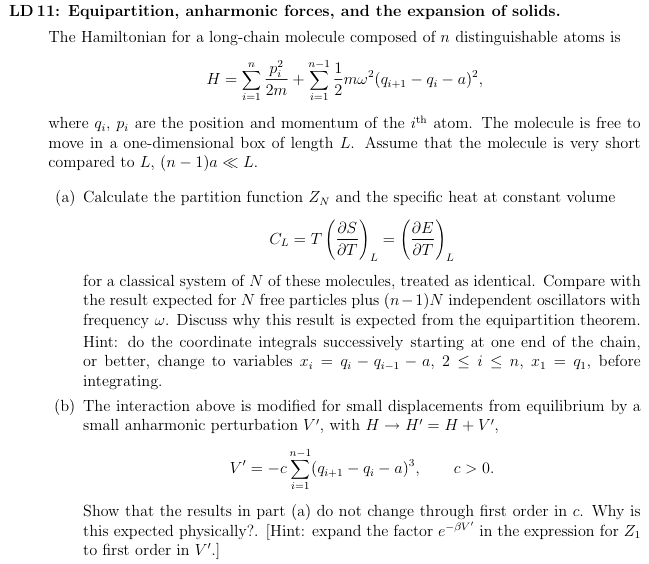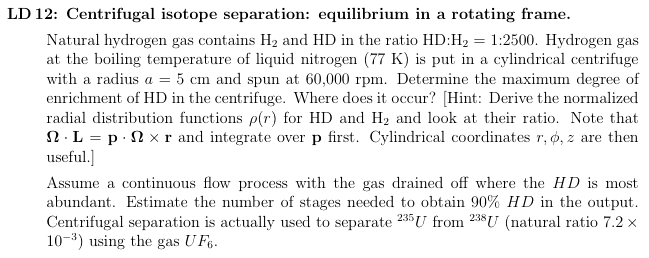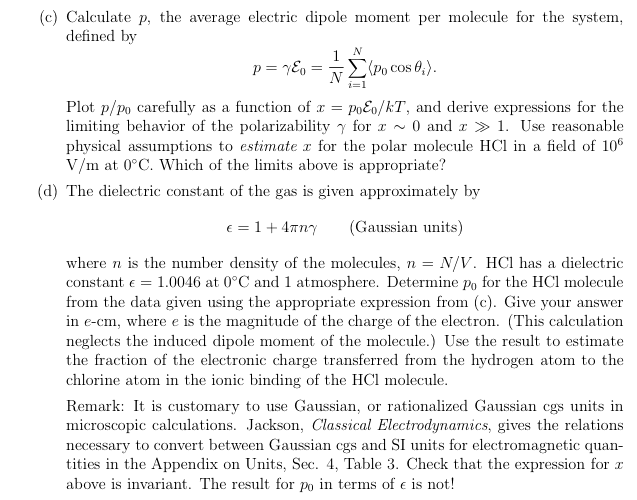

PROBLEM SET 4
Due Friday, February 17, 2006
HOUR EXAM IN CLASS WEDNESDAY, FEBRUARY 22, 2006, ON UNIT 1
Reading: Landau and Lifshitz, Secs. 26, 32, 34, 35, 37-39


| Question:
Why do solids expand when heated, assuming no change in the lattice
structure (no phase change)? This problem and the character of the underlying
interatomic potentials provide a microscopic answer. Note that a purely
harmonic solid would not expand, a result which follows from (c). Your
numerical results in (c) should seem reasonable, and show how microscopic
parameters can be determined from macroscopic measurements, once we
understand the statistical connection.
|
||
| Note: The reference given to the CRC Handbook of Chemistry
and Physics is specific to one student edition/printing. Look under
"thermal expansion" in the index to get the proper page in the edition you
use.
Comments:
The initial harmonic expression for the potential, generalized to three
dimensions, would be the normal starting point for the description of a
cubic solid. The Hamiltonian can be simplified in terms of a set of uncoupled
normal mode oscillators. The relation given in (c)
between the speed of sound, the fundamental frequency
|

| Comment: This practical problem, much in the news lately, illustrates why the possession of certain types of ultracentrifuge is of interest to the International Atomic Energy Agency. |


| Comments:
Classical statistical mechanics is formulated in terms of phase space
distributions and canonical variables. The canonical desciption is crucial
for the foundations of the theory, but we may well want on occasion to
use noncanonical variables in actual calculations. The result you get
in (a) in going from canonical to noncanonical variables should not be a
surprise. Landau and Lifshitz simply use the result without derivation
in their treatment of rotating molecules in § 29, Prob. 5 - they
already know the answer!
|
||
|
In case you have forgotten, the Jacobian is the determinant of the matrix
of partial derivatives of the old variables with respect to the new, or,
using properties of determinants, the inverse of the matrix of derivatives of the new variables with respect to the old. Use whichever is easier to
calculate.
|
||
| The last part of the problem gives an answer to the question "How do we know, or how
can we measure, the permanent dipole moments of molecules?" The function
that appears in the result you will obtain for p(x) is called
the "Langevin
function." It will reappear in the equivalent problem of a collection of
magnetic dipoles in a magnetic field, i.e., in the discussion of classical
paramagnetism.
And again: get used to Gaussian units. There are no funny factors around, so definitions of moments, etc., and theoretical calculations are simpler. You can always convert to SI units at the end using Jackson's table. |